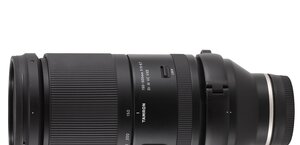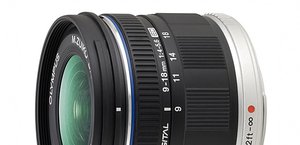Nikon Nikkor AF-S 80-400 mm f/4.5-5.6G ED VR
3. Build quality and image stabilization
When compared to the older version the weight and dimensions of the new lens increased. Of course it is due to a higher number of optical elements and the presence of the SWM motor. In return you get a far shorter minimum focusing distance although it has to be said the Nikkor still lags behind the rival Canon in that category.
The biggest diameter of the new Nikkor sticks out at once, especially when compared to the diameters of its predecessor and rivals. What’s interesting it doesn’t guarantee a superior aperture fastness. In the middle of the focal range the Canon is actually a tad faster: for example at 200 mm the Nikkor’s maximum aperture amounts to f/5.3 and the Canon’s is f/5.0; at the 300 mm focal length the Nikkor can be as fast as f/5.6 and the Canon’s maximum aperture remains still f/5.0.
Please Support UsIf you enjoy our reviews and articles, and you want us to continue our work please, support our website by donating through PayPal. The funds are going to be used for paying our editorial team, renting servers, and equipping our testing studio; only that way we will be able to continue providing you interesting content for free. |
- - - - - - - - - - - - - - - - - - - - - - - - - - - - - - - - - - - - - - - - - - - - - - - -
In the photo below the Nikkor AF-S 80–400 mm f/4.5–5.6G ED VR is positioned between the Nikkor AF-S 24–70 mm f/2.8 and the Sigma A 35 mm f/1.4 DG HSM.
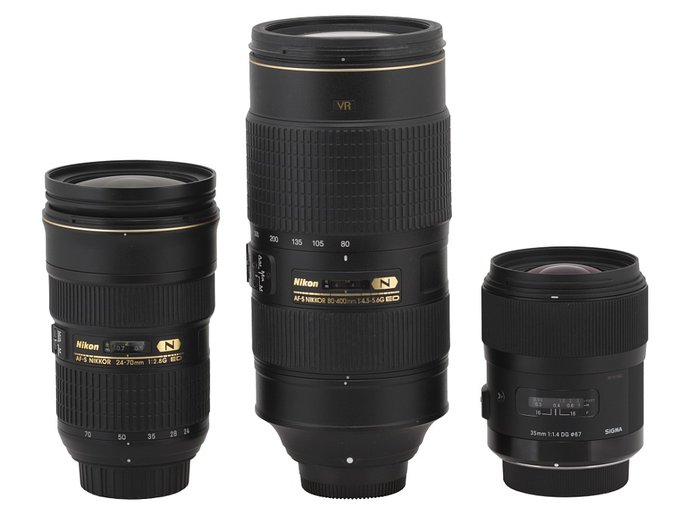 |
The tested lens starts with a metal mount which surrounds a contact plate and a plastic projection, the beginning of the inner tube. The rear element is about 23 mm in diameter and even at 80 mm it is hidden inside the tube about 2 cm deep. After increasing the focal length to 400 mm that element hides even deeper, over 4 mm inside; still the interior of the tube is black, ribbed and nicely matted – no complaints here.
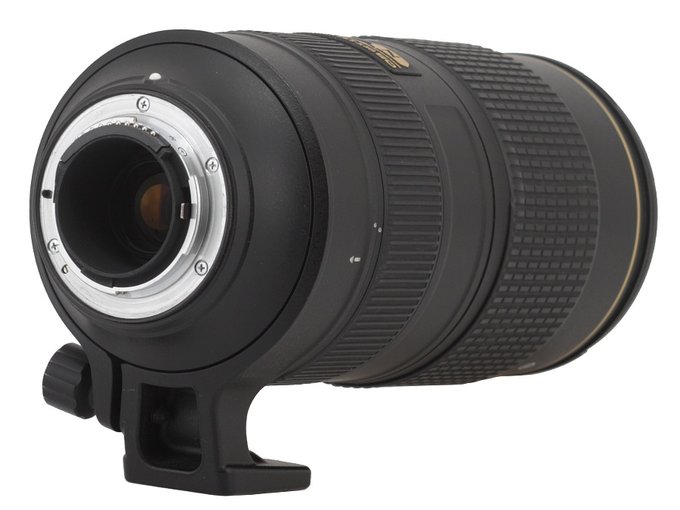 |
An immobile, metal part begins the proper casing; its diameter grows pretty quickly when you move away from the mount. That part is smooth, with just a white dot making the alignment with a camera easier. It turns into a place where you can attach a removable tripod collar. The collar is rather small taking into account the focal lengths it has to cooperate with.
The next part is a manual focus ring, 3 cm wide. It is covered entirely by rubber ribbing and moves smoothly, without any slacks. Running through the whole distance scale takes a turn through an angle of 90 degrees – a hardly impressive value.
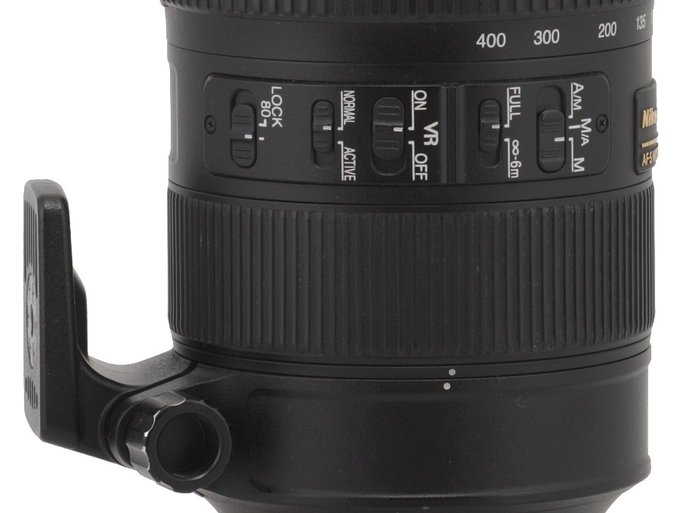 |
Further on you see a plate with the name and parameters of the lens; it surrounds a window with a distance scale, expressed in meters and feet. On the left side of the plate there is a really impressive array of switches. The first one is used to change the focusing mechanism mode (A/M, M/A and M), the second one allows you to control the working range of that mechanism (FULL and from 6 metres to infinity), the third one switches the optical stabilization on and off (VR ON/OFF) and the fourth one allows you to choose its mode (NORMAL/ACTIVE). The last switch (LOCK 80) blocks the tube of the lens at the 80 mm focal length.
The biggest part of the proper tube is occupied by a zoom ring, being almost 6 cm wide. Most of it is covered by rubber ribbing under which there are focal length marks at 80, 105, 135, 200, 300 and 400 mm. The ring moves well - it is smooth and well-damped – and it makes the front element system extend on a smooth, solid but undeniably plastic tube. During that process the length of the lens can increase by 47 mm.
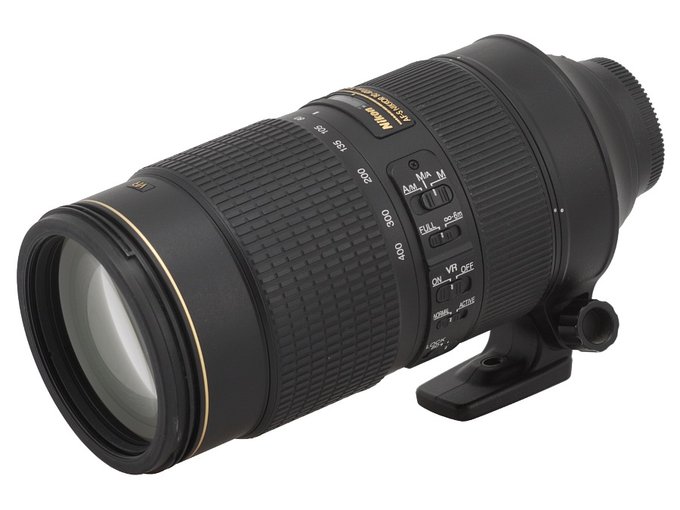 |
Behind the zoom ring you see another immobile, metal ring which diameter doesn’t changes. There is a golden stripe on its surface, a VR mark meaning this lens boasts optic image stabilization and information concerning the filter diameter, SWM autofocus, ED elements, Nano Crystal Coating, internal focusing and the fact that the lens was made in Japan.
The front element of the lens is 72 mm in diameter and surrounded by a filter thread, 77 mm in diameter, which doesn’t rotate; then you see a hood mount.
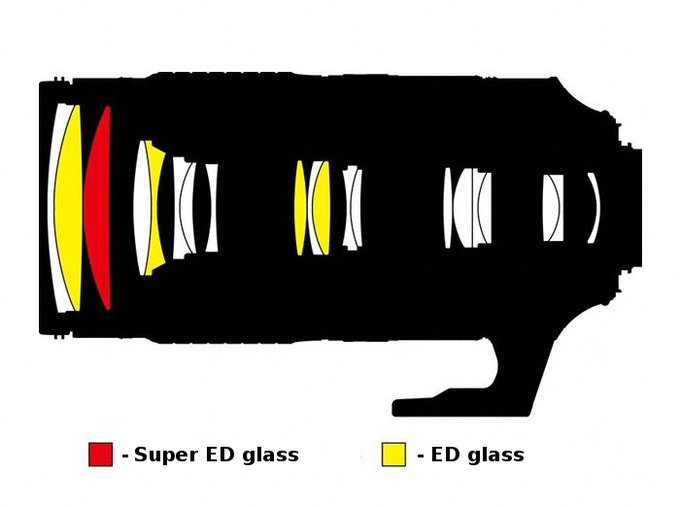 |
Buyers get both caps, a hood and a nylon padded case in the box along with the lens.
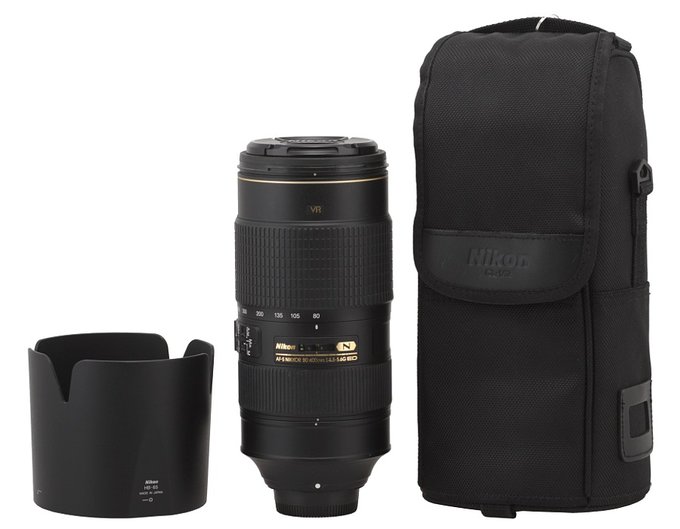 |
Optical stabilization
According to the producer the optical stabilization system of the tested lens is capable of 4 EV stops of vibration reduction. In order to check that claim at the 400 mm focal length we took several dozen photos with exposure times rankgng from 1/400 to 1/4 of a second and the stabilization switched on and off. Then we determined the percentage of blurred photos at every shutter speed and presented it as a function of that speed, expressed in EV (with 0 EV being an equivalent of 1/320 of a second). The graph below shows our results.
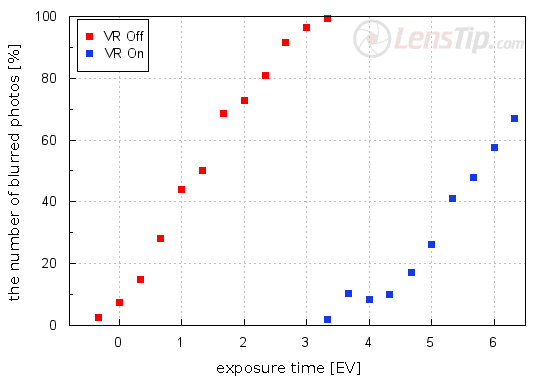
As you can notice the maximum distance between both curves reaches 4.3-4.5 EV and such is, according to our test, the efficiency of the stabilization mechanism. It is a truly sensational result, especially if you remind of the performance shown by the predecessor of the tested lens. It’s enough to add that taking photos at 400 mm focal length with a body providing a firm grip you can use 1/10 of a second shutter speeds without any problems and most of your photos will be sharp.




